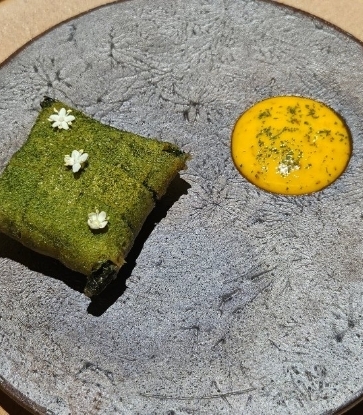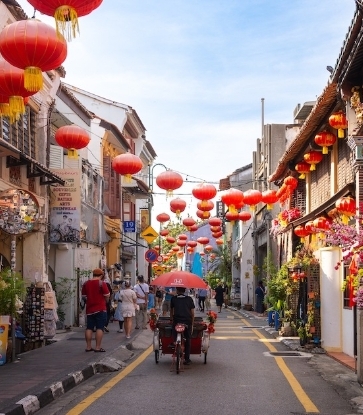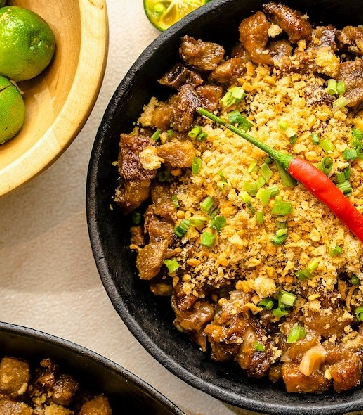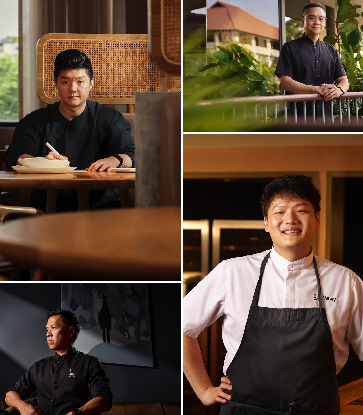Nothing encapsulates the Malays’ love for rice and coconut milk more than Nasi Lemak, a match made in heaven for what has to be Malaysia’s favourite breakfast dish.
The name comes from the Malay term for "rice" (Nasi) and "creamy-rich" (Lemak), an allusion to the use of coconut milk to enrich the rice. But Nasi Lemak’s appeal transcends all ethnic divides here — Malays, Chinese, and Indians equally crave good Nasi Lemak — and even transnational boundaries, as one finds this popular dish throughout the region.

Nasi Lemak is so much the comfort food, it is sometimes forgotten that it would not have been possible without the introduction of chillis by the Portuguese, who first arrived in Malacca in 1511.
The earliest English description of Nasi Lemak is found in British colonial administrator, Sir Richard Olaf Winstedt’s seminal book, The Circumstances of Malay Life: The kampong. The house. Furniture. Dress. Food., published in 1909. In there, he posits:
“He will boil the rice along with such spices as caraway seeds, cloves, mace, nutmeg and ginger, and garlic, in dripping or coconut oil; or he will boil it in coconut milk instead of water... The maritime Malay uses fish and (with a squeeze of lime juice) that stinking condiment famous from Bangkok to Burma, so repellent to the uninitiated and so indispensable to the connoisseur, belachan, the crushed salted paste of shrimps and young fry, to obtain which the Chinese fisherman will sail through every section of the fishing rules.”
In Malaysia, a traditional serving of Nasi Lemak usually consists of a mound of coconut milk-enriched rice that comes scented with fragrant pandan, a good sambal belachan to add a spike of heat, garnished with slivers of fresh cucumbers, toasted groundnuts, a wedge of hard-boiled egg, and crisp-fried ikan bilis (salted, sun-dried anchovies). From this basic combination, the Nasi Lemak’s repertoire has been expanded nowadays to include a whole host of garnishes that one can choose from as add-ons, depending on each vendor’s offerings: spiced cuttle-fish, beef rendang, chicken curry, fried fish, chilli-spiced shrimps, and more.
In the MICHELIN Guide Penang, two restaurants that specialise in Nasi Lemak are listed: Bib Gourmand Rasa Rasa and MICHELN Selected Ali Nasi Lemak Daun Pisang. We paid a visit to both eateries to ask the owners what makes a good and satisfying serving of Nasi Lemak. Here's what they have to say.

Rasa Rasa
Bib GourmandMICHELIN Guide Kuala Lumpur & Penang 2024
Cosy, atmospheric Rasa Rasa, a popular Bib Gourmand-listed Nasi Lemak spot in Penang, is located right smack in the middle of George Town’s historic waterfront district.
Chef-owner Ooi Chong Yong, formerly a successful graphic designer, had worked for some of the largest retail malls in Penang. He decided to quit the rat race after 20 years of stressful corporate life to pursue his other passion: cooking good food that he enjoys.
Ooi fashions his Nasi Lemak from a combination of good quality rice, fresh coconut milk, pandan juice, and ginger. Instead of the ubiquitous fried chicken offered by most Nasi Lemak vendors, his rendition comes with a rich, spicy Nyonya chicken curry. Other choices of garnishes include fried turmeric-marinated “ikan selar” (yellowtail scad), sambal chicken, jiu hu char (shredded jicama with cuttlefish), and fluffy Thai-style omelette.
“My chicken curry is freshly cooked at the beginning of each day,” he says. “We prepare family-sized portions each time, so our customers get to savour good old-fashioned, home-cooked flavours.”

Ooi’s sambal belachan is especially coveted by his regulars who simply can’t get enough of its chutney-like texture and mouthfeel. “I make my sambal belachan on a weekly basis, where I slow-cook chillies, small onions, ginger, garlic, lemongrass, and belachan. Salt and sugar are added to taste. We have customers who purchase jars of this chilli sambal to bring home, even those from overseas.”
Besides its popular Nasi Lemak, Rasa Rasa also offers other tasty options like fried bee hoon (rice vermicelli), mee goreng (fried noodles), toasts, and breakfast fry-ups with sausages, eggs, and chicken ham.
Rasa Rasa is located at 59 Gat Lebuh Chulia, George Town, 10300, Malaysia.
Ali Nasi Lemak Daun Pisang
SelectedMICHELIN Guide Kuala Lumpur & Penang 2024
Beyond a doubt, Penang’s most famous Nasi Lemak purveyor, Ali Nasi Lemak Daun Pisang, was founded back in 2004 by Mansor bin Musa, better-known by his nickname “Ali”. The former factory worker supplemented his income by selling Nasi Lemak using a recipe shared by an Indonesian friend. Bin Musa passed away in 2016, and today, his wife, Kak Iwas, carries on her husband’s legacy. She is assisted by her son, Safiq bin Mansor, and their cheery crew of friendly, chatty Indonesian kitchen helpers.

Their Nasi Lemak is justly famous for its tongue-numbing sambal, poured liberally over a mound of rice, garnished with a choice of sides such as crispy ikan bilis, fried fish, fried ikan masin (salted fish), chicken, squid, shrimps, and hard-boiled egg. The whole concoction is then wrapped in fresh banana leaves, which give the dish its intoxicatingly delicious aroma.

The queue at the popular stall, strategically located at the entrance of a bustling food court in George Town’s central business district, is neverending, as their customers can never seem to get enough of Ali Nasi Lemak Daun Pisang’s offerings.
“We use only dried chillies for our sambal paste, which we grind together with onions, toasted belachan (fermented shrimp paste), and other ingredients. Our customers love it — the spicier, the better, they say. That’s what makes our Nasi Lemak special,” the amiable Safiq shares.
Ali Nasi Lemak Daun Pisang is located at Sri Weld Food Court, 19 Lebuh Pantai, George Town, 10300, Malaysia.
Malaysia’s culinary world has always been a test bed where different food cultures meet, intertwine, and counter-influence each other. But amidst the vigorous inter-cultural gastronomic exchanges, the prodigious Nasi Lemak stands proudly as the much-loved contribution to the food universe by a bounteous Malay world, one of coconut palm-fringed coastlines, verdant, green paddy fields, and the freshest seafood harvested from the surrounding waters. Nasi Lemak truly is the soul food of this beautiful land, where a myriad of tastes come together in delicious harmony.
All images are from Peter Yeoh, unless otherwise stated. Header image is from Shutterstock.




















